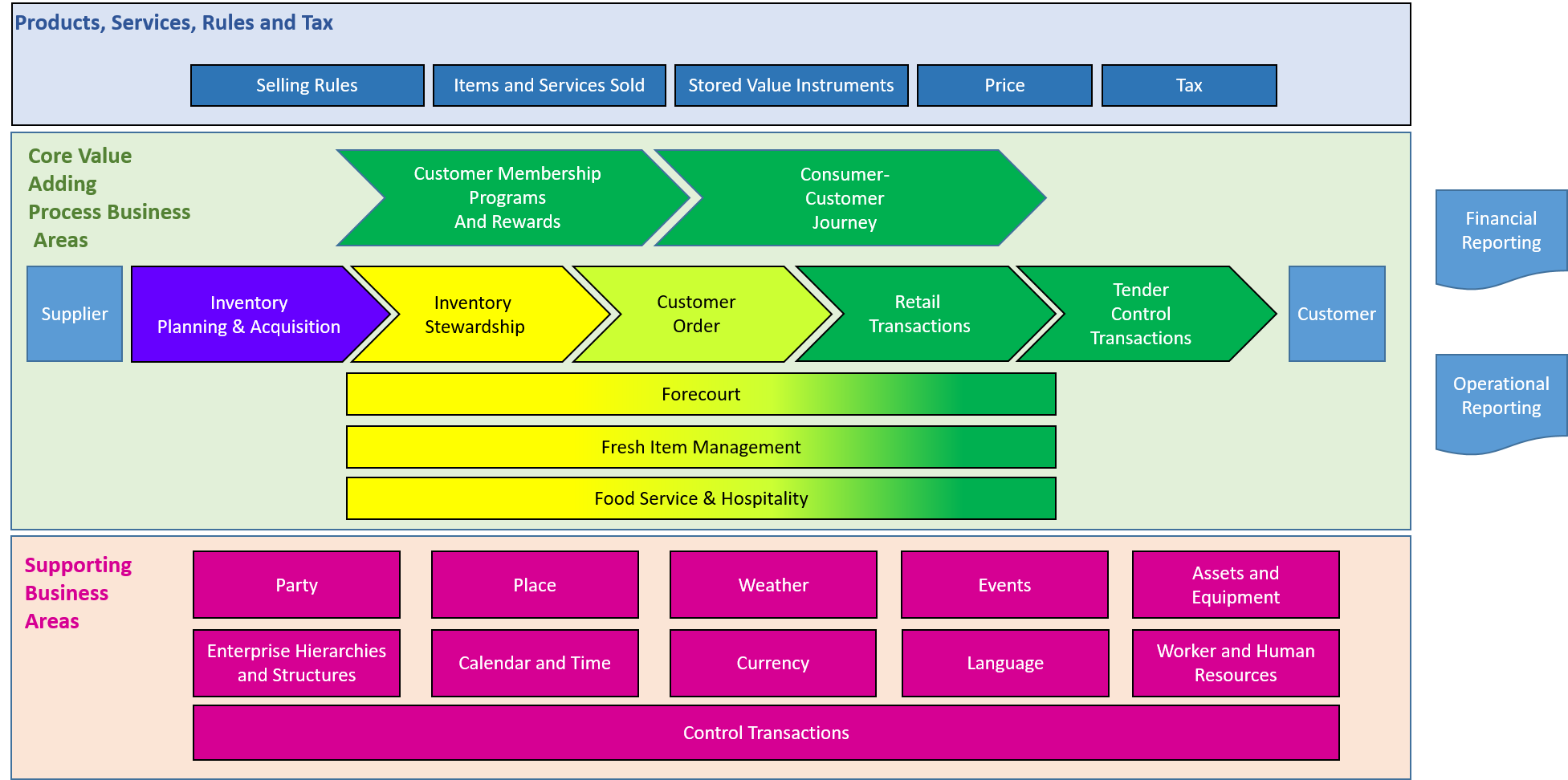Welcome to version 7.3 of the ARTS Operational Data Model (ODM) The ARTS Operational Data Model (ODM) identifies, defines and describes retail entities and relationships. The model is twenty years old. It evolved from a store-based retail transaction model into a retail enterprise information architecture model capable of supporting world-wide operations. ARTS continues to extend and revise the operational data model as reflected in this new version. Narrative PurposeThis narrative's purpose is to: •Explain the structure and contents of the ARTS Operational Data Model; •Introduce readers to the major retail business subject areas covered in versions 7.0 through 7.3 - particularly the new customer subject areas; •Briefly describe the modeling language and notation used in the entity relationship diagrams; •Help readers identify themes in the model that are most relevant to business challenges they are facing today; and •Provide a navigable reference to the ARTS meta data built around fully attributed entity diagrams. Intended Audience for this NarrativeThis narrative is for data architects, enterprise architects, data modelers, application developers, business analysts, business area middle managers, program and project managers and other similar professionals responsible for building and supporting retail enterprise systems. This document describes retail enterprise information structure and content in detail. It contains a lot of data modeling terminology and expresses retail concepts in a formal style. It is designed to be used by data modelers, information architects, retail software engineers and retail business systems analysts. The model or pieces of the model may be used as a reference to guide database designs for retailers or directly copied and integrated into a retailer's database design. The ARTS ODM incorporates both logical and physical relational data models plus a generated physical database (for Microsoft SQL 2012 Server). How to Use this NarrativeThis document introduces and explains the thinking behind the ARTS Operational Data Model. It should be reviewed along with the entity diagrams for each subject area. All of the entity models are hyperlinked to detailed definitions so readers can jump to a topic of interest, review the narrative and dive into the model details. The narrative covers a number of retail enterprise business topics in detail and may be used to supplement retail business text books for readers that are unfamiliar with retail business concepts.Getting StartedThe ARTS Operational Data Model (ODM) is a large, enterprise level relational data model designed to support a wide range of retail businesses. It is composed of 133 subject areas, over 850 entities, over 1,700 relationships and over 6,800 attributes. As a relational data model, it is intended to support retail transaction processing. It provides the reference and master data needed to properly define the customers, items, channels etc. that establish the context for transactions. Readers that are unfamiliar with data modeling should read the ARTS Data Modeling 101 topic. It introduces the notation and diagramming conventions used in the ARTS ODM. The best way to start exploring the ODM is to pick a topic of interest from Figure 1 and follow the link. Each link brings up a topic and related a related data model. Retailing is a complex business. That complexity is reflected in the ARTS ODM. The functionally oriented topics share a lot of data structures and content. In exploring one topic, data model reviewers will discover other related topics worthy of study. This interrelationship of topics comes from the normalized data modeling strategy behind the ARTS ODM. Every model part exists in a retail enterprise context. There are no isolated, stand-alone islands of data. Data Model OrganizationThe diagram here presents a visual table of contents of the ARTS operational data model. Each of the shapes in the diagram below represents a major data model topic. Each topic deals with a specific retail business area. Clicking on a shape will link to the topic which describes the business area and presents the related data model subject areas as sub-topics. As an alternative, readers may choose to use the table of contents shows to the left to navigate through the data model. Figure 1 - ARTS Operational Data Model Business Area Content The visual table of contents is a simple overview of the retail business areas addressed in ARTS ODM V7.3. The three transaction-oriented collections of business areas address the day to day aspects of running a retail enterprise. The two reporting collections (off to the right) address the operational reporting needs. ARTS also has a data warehouse model to address analytic reporting needs. That model is one release behind the ODM V7.3 and will be updated in the future. The ARTS Operational Data Model is a living document and will continue to be extended to reflect changing retail business processes and technology. For more information about the technical features of the ARTS ODM see Data Model Artifacts which explains the work products and Data Modeling Methodology and Notation which explains the diagram conventions used in the work products. Additional ARTS OfferingsThe ARTS Operational Data Model is part of a comprehensive suite of Data Management products. For more detail about the ARTS Data Management offerings see NRF-ARTS Data Model link. |
